Your Time: Your Score:
1-2 Minutes
You did GREAT!
Pick another game.
3-5 Minutes
That's pretty good.
Play again to improve!
5 Minutes or More
Launch the EBook.
Learn more about this!
You did GREAT!
Pick another game.
That's pretty good.
Play again to improve!
Launch the EBook.
Learn more about this!
It takes about 28 days for our Moon to orbit our planet Earth. The first day of this Lunar Orbit is when the Moon is exactly between our Sun and planet Earth. This day is called the "New Moon". We only see the side of the Moon that is in shadow, because the Sun is on the other side. As the Moon continues on its orbit around us, we will see more and more of the side of the Moon lit up by the Sun each day. This increase in the size of the Moon's lit side each day is called "WAXING".
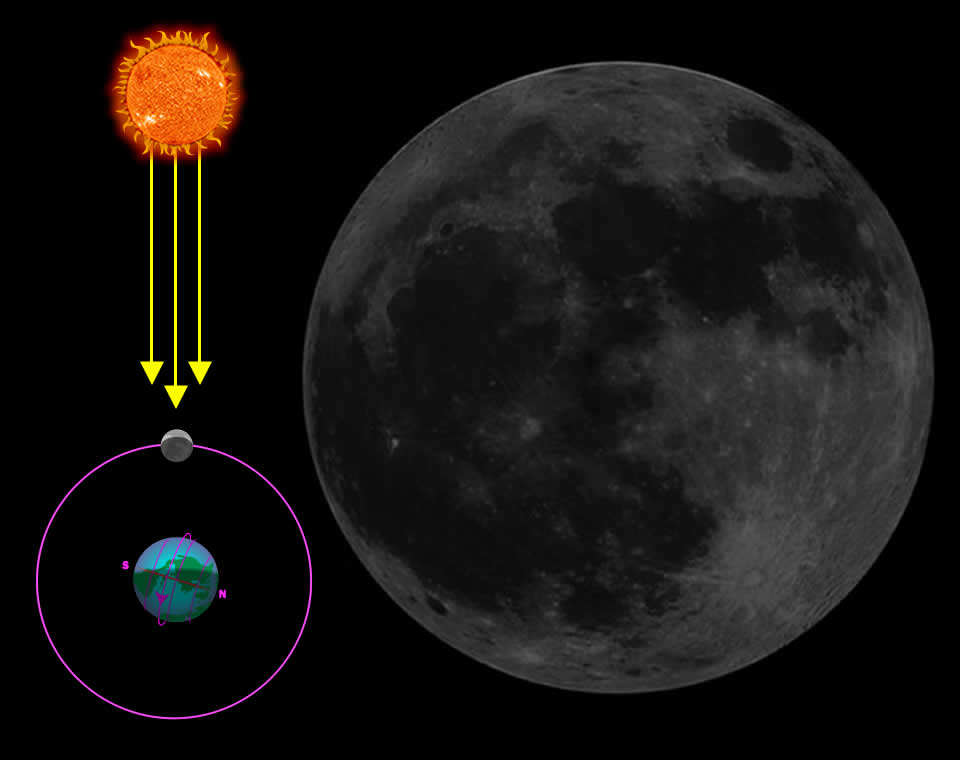
As the Moon continues to orbit around our planet, we can see a little bit more of the sunlit side of the Moon each day. When the Moon is one eighth the way around, we call it a "Waxing Crescent". As this bright, crescent shape continues to grow or (WAX), we can start seeing details of the Moon's surface. At night, you may be able to see dark patches on the Moon, and some round craters. These were made by meteors hitting the Moon's surface over millions of years.
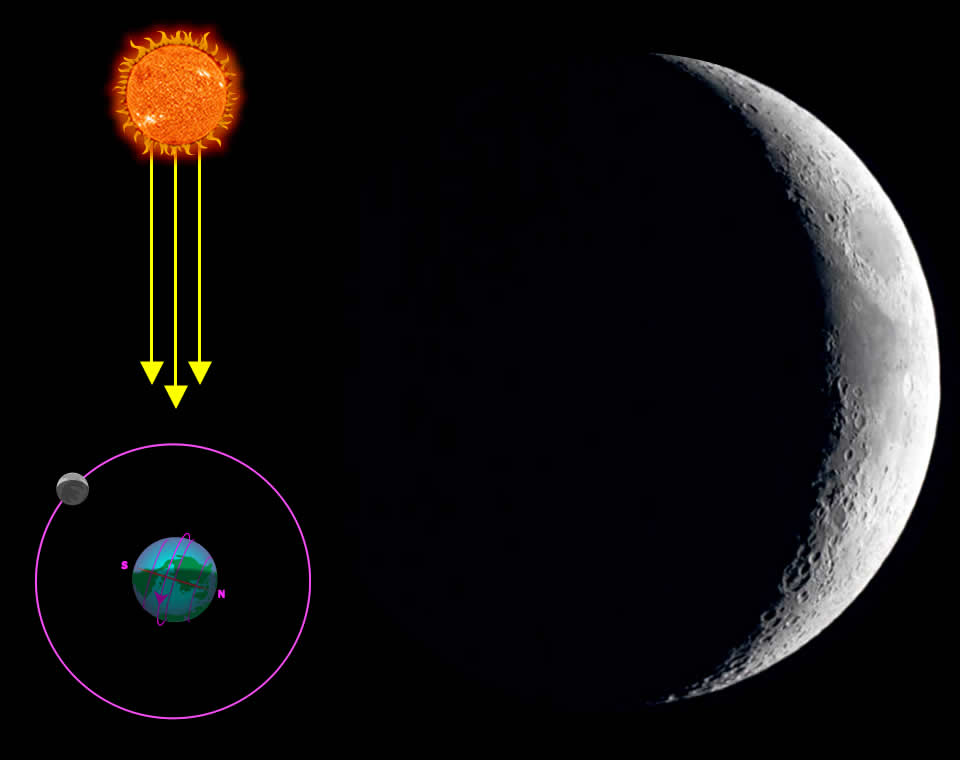
When half the Moon is lit up, the Moon is one quarter of the way around planet Earth. This "First Quarter Moon" is also called a "Half Moon". You can tell which direction the Sun is located now because it is opposite of the shaded half of the Moon. This means that the Moon is at a 90 degree angle from line between planet Earth and the Sun. This First Quarter Moon is still Waxing and will continue to Wax until the whole Moon is lit up and forms a near-perfect circle.
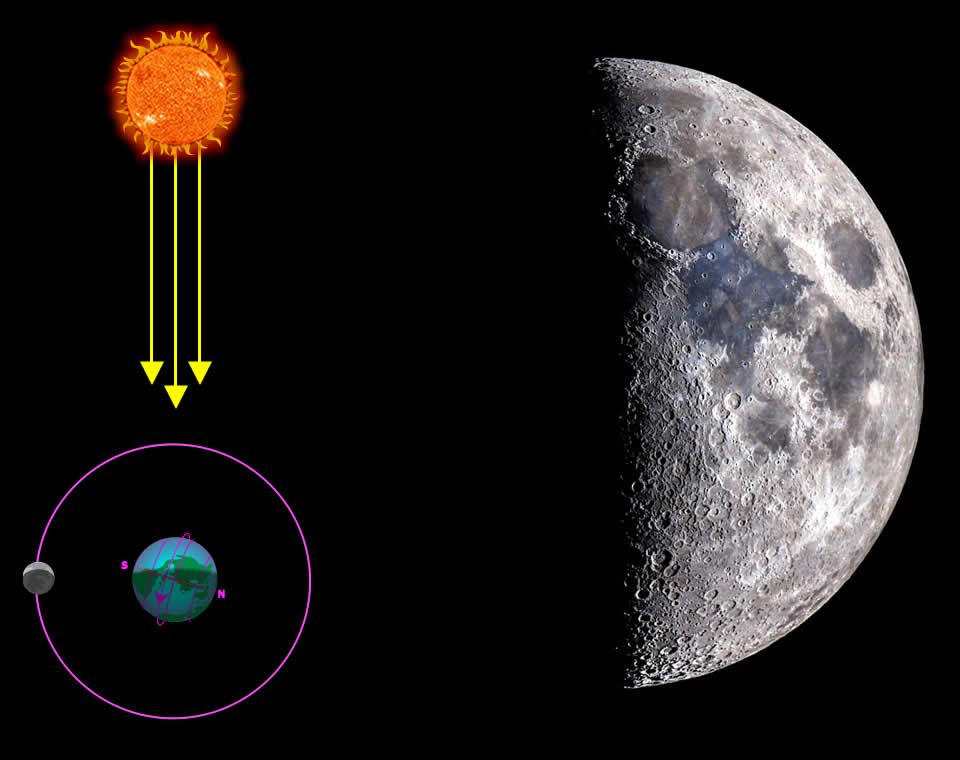
The Moon is almost half-way around planet Earth now. Three quarters of the Moon's surface is now lit up. We call this a "Waxing Gibbous Moon" and while it is not a "Full Moon" or a perfect circle, it is very bright in the night sky. We can see many more details of the Moon's surface now. Many of the larger craters on the Moon are so big that they cast their own shadows. The Moon will continue to WAX as it approaches the halfway point in its orbit around planet Earth.
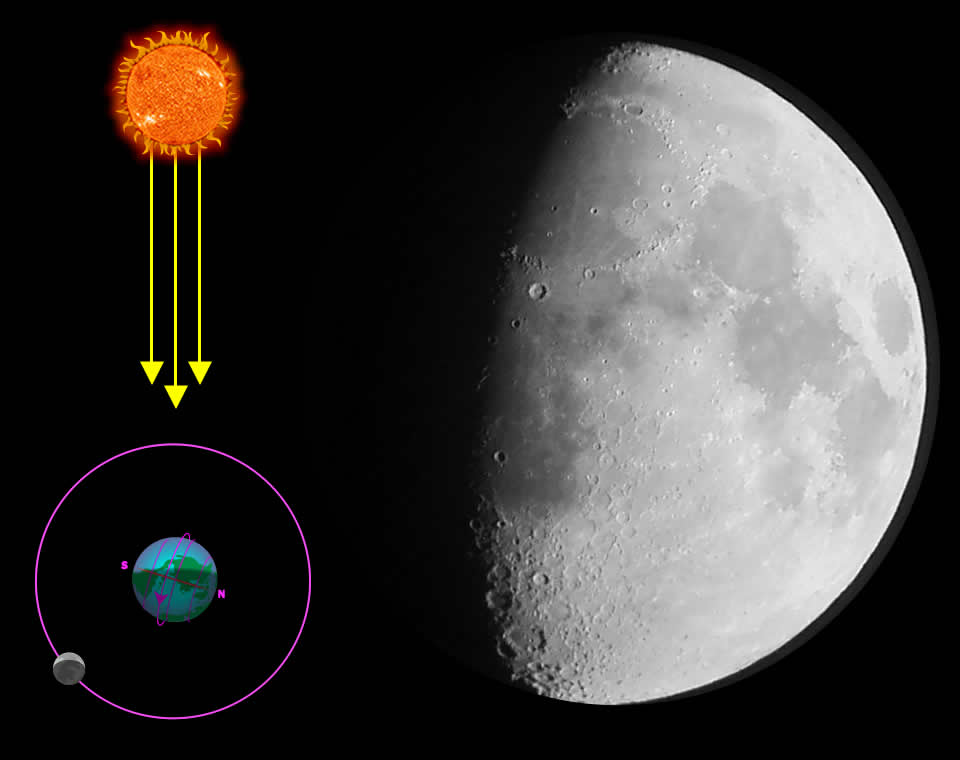
The "Full Moon" is now halfway through its orbit around Earth. It is farther out in space from the sun than we are, and when we look at the "Full Moon" at night, the Sun is behind us. The Moon will now begin to WANE as it heads into the second half of its orbit. Sometimes during the Full Moon, the Moon can pass through the shadow of the Earth, which stretches out into space. During this Lunar Eclipse, the Moon becomes a dark red, but lights up again after leaving the Earth's shadow.
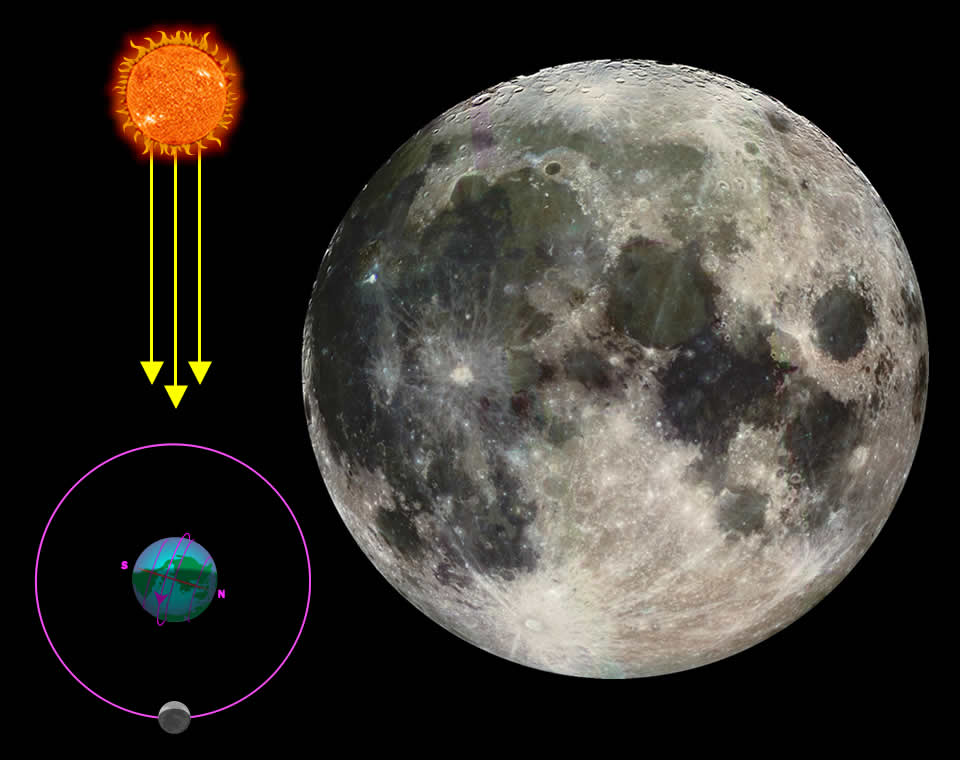
The Moon has passed the half-way point in its orbit around planet Earth. Three Quarters of the Moon is lit up now, and we call this a "Waning Gibbous". The part of the Moon now in shadow is on the other side, and it covers more of the Moon each night. The Moon is still very bright as it moves across the night-time sky. In another three to four days, we will see the Half Moon of the Last Quarter.
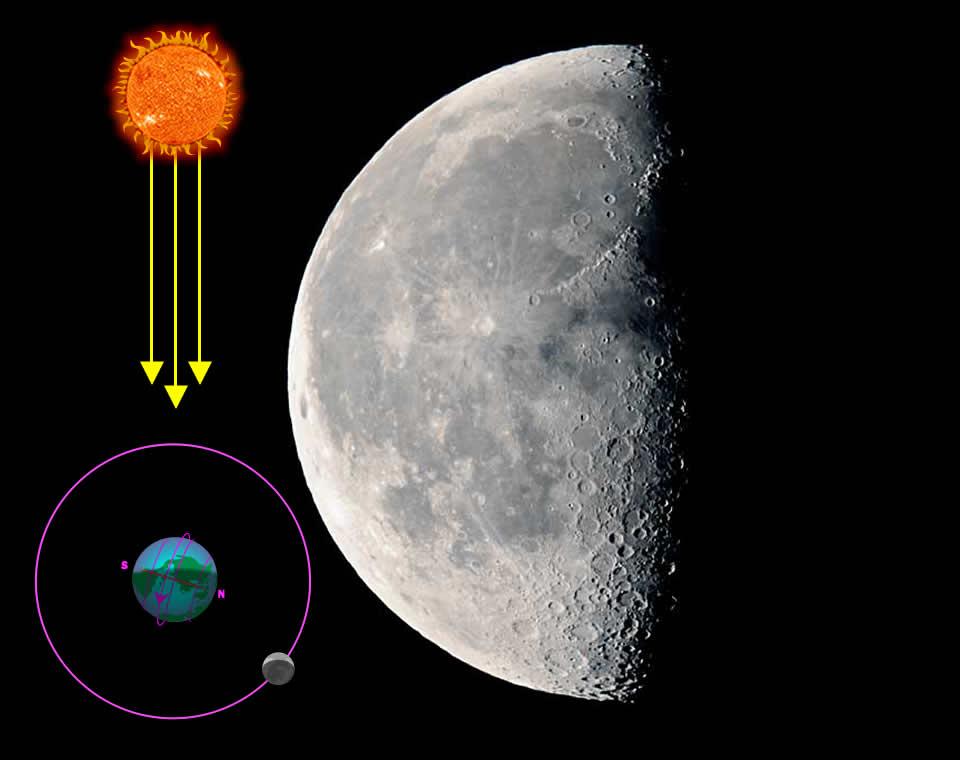
As the Moon enters the "Last Quarter" of it's orbit, we will see the second Half Moon of the Lunar Cycle. The Moon during this phase is once again at a 90 degree angle from line between the Sun and planet Earth. Exactly opposite from where it was in the First Quarter. During this phase of the Moon, you can see the dark areas on the Moon's surface that are called "Maria" or "Seas", but which are really areas of cooled lava. This Last Quarter is followed by the "Waning Crescent".
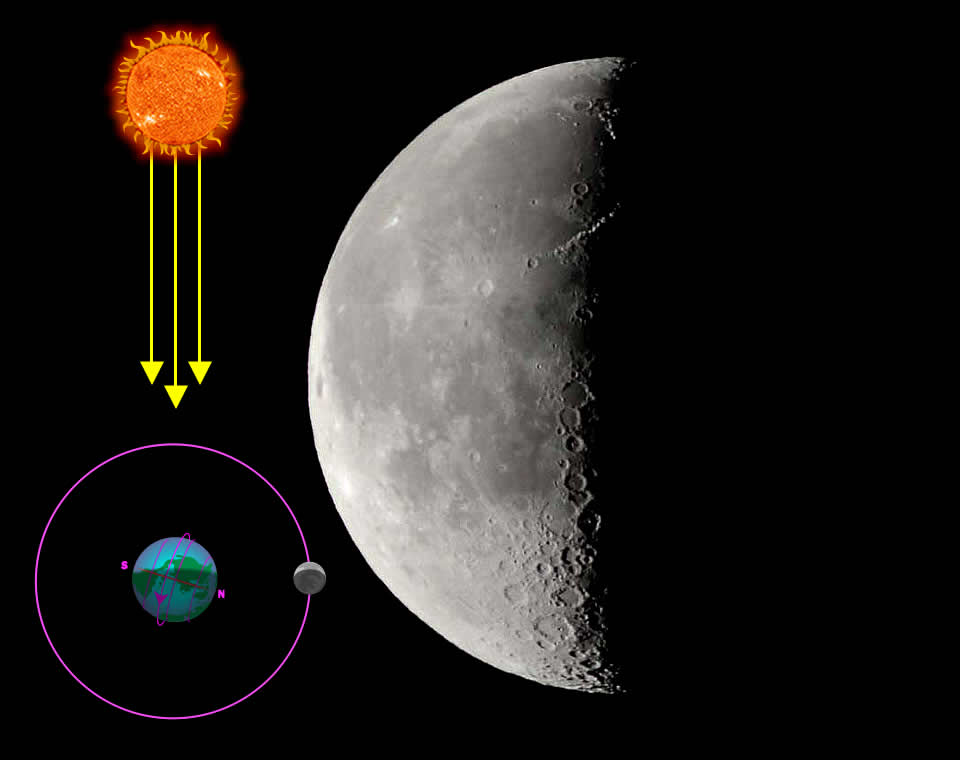
The Moon is at the last phase of the Lunar Cycle when it becomes a "Waning Crescent". The Moon has almost completed the 28 day orbit around our planet earth and is almost between the planet Earth and the Sun once more. Most of the Moon is now in shadow. The thin crescent shape is the only portion of the Moon's sunlit surface we can see now. In three or four days, the only portion of the Moon we will see is the shaded surface. That New Moon will start the Lunar Cycle once more.
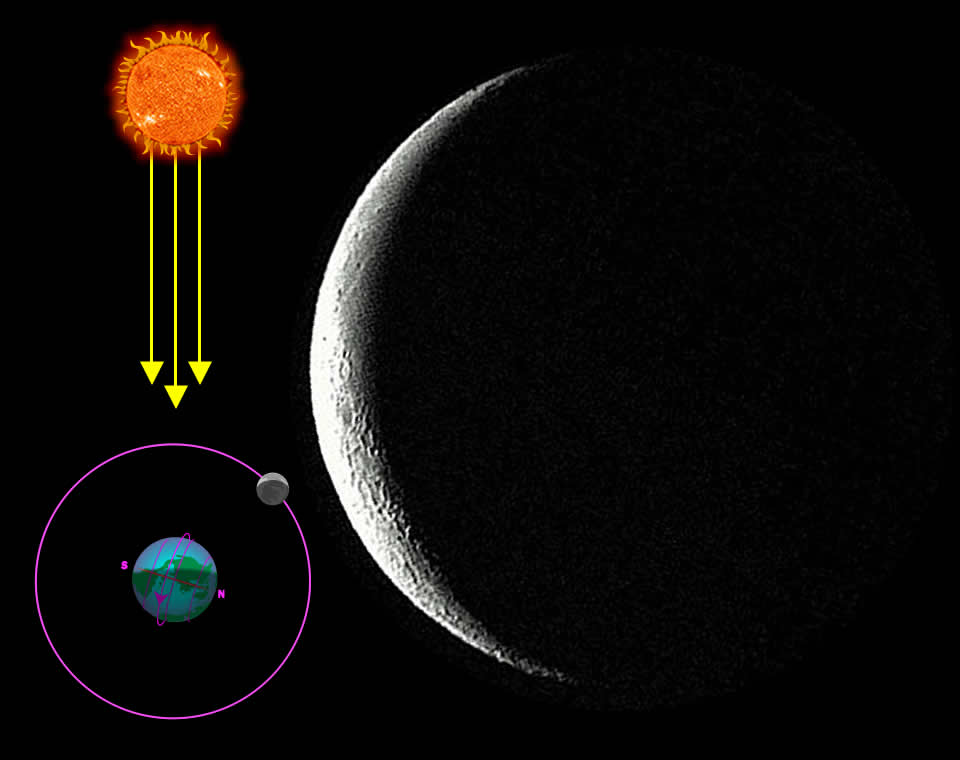
Score: